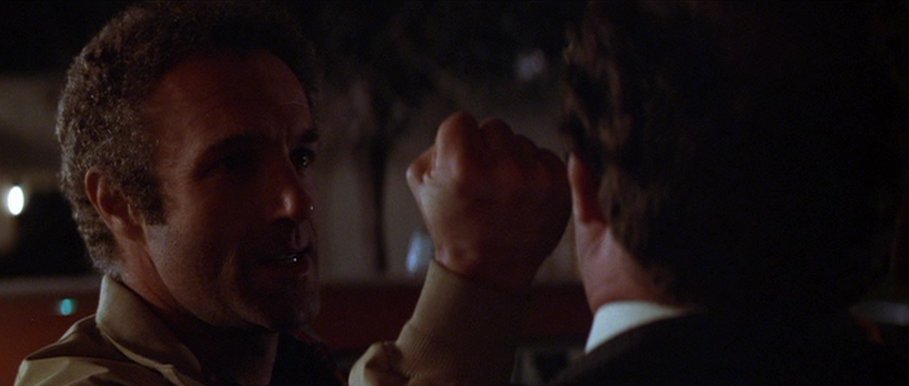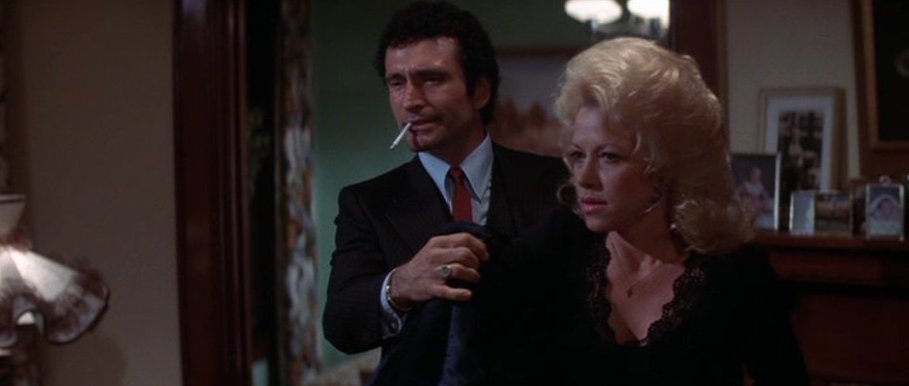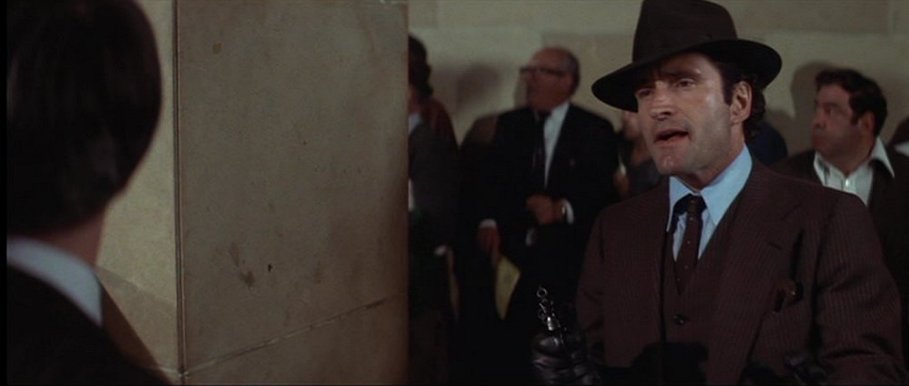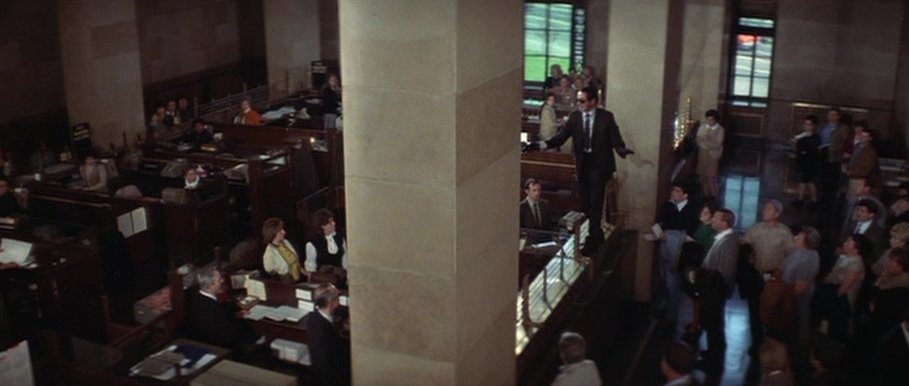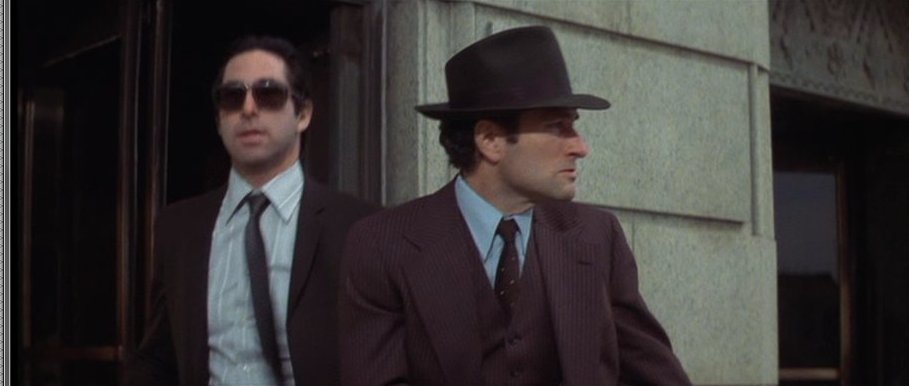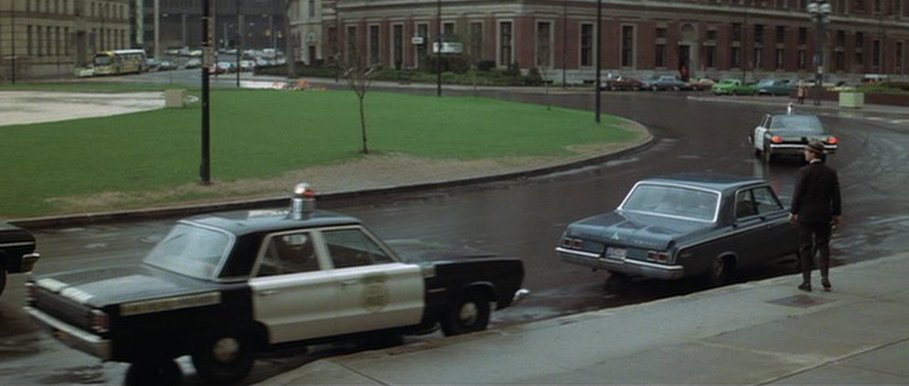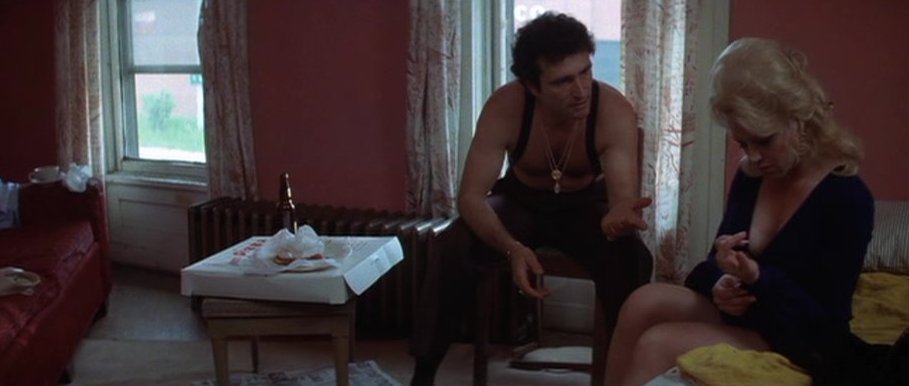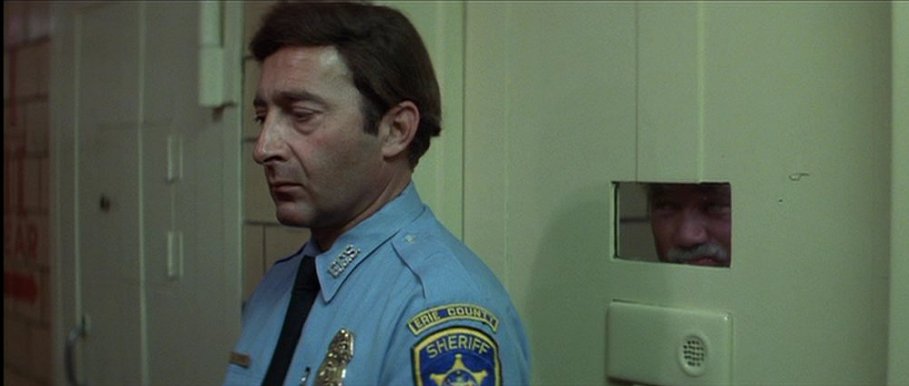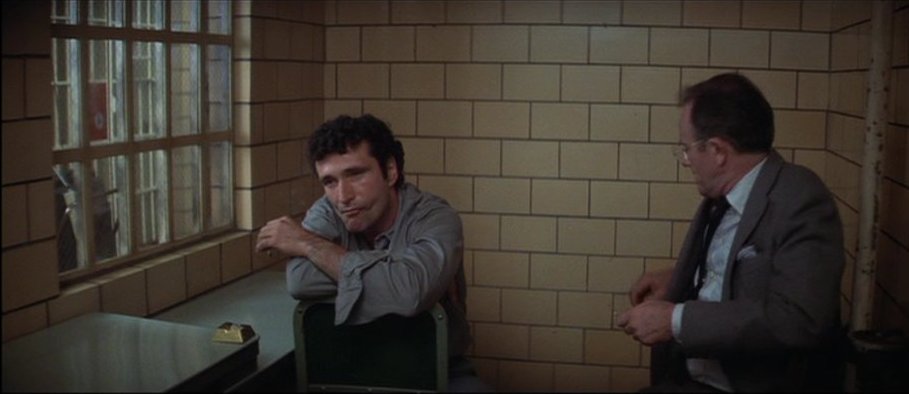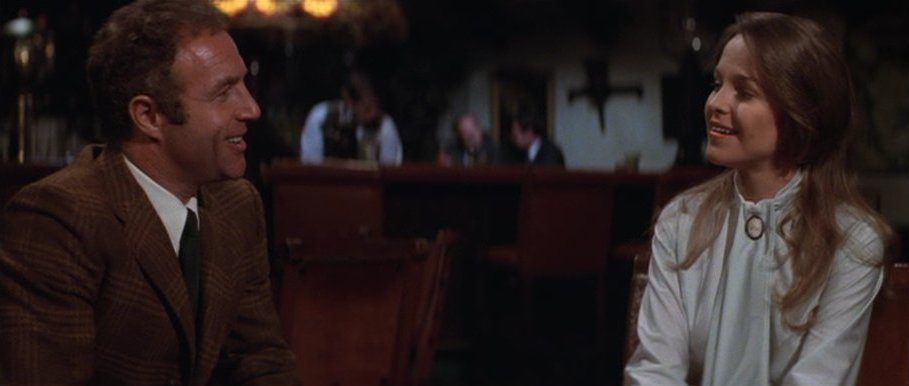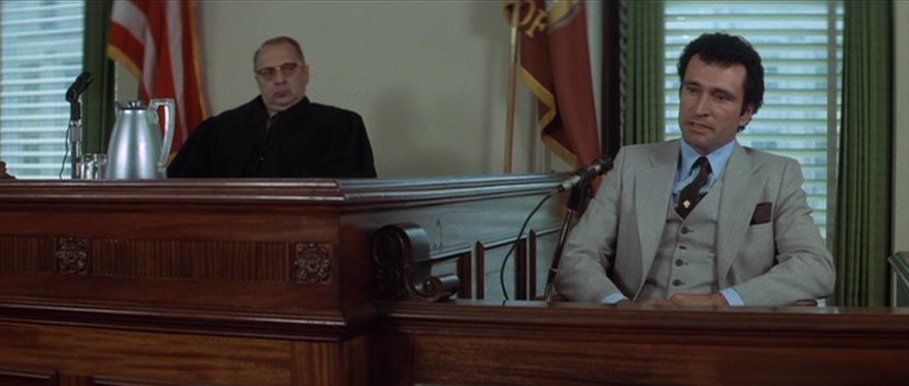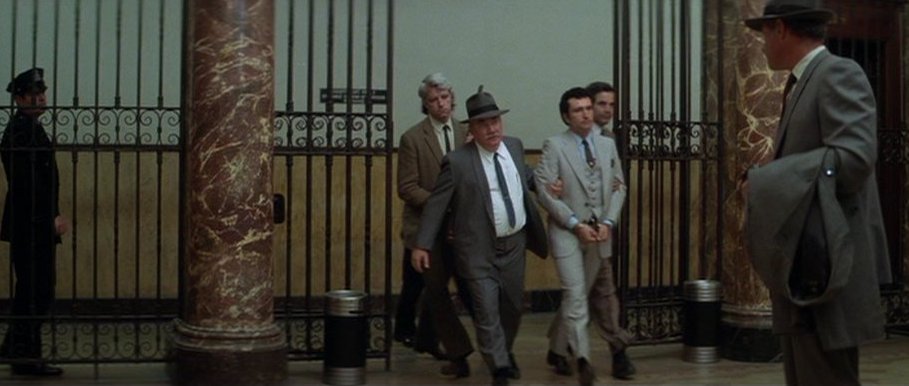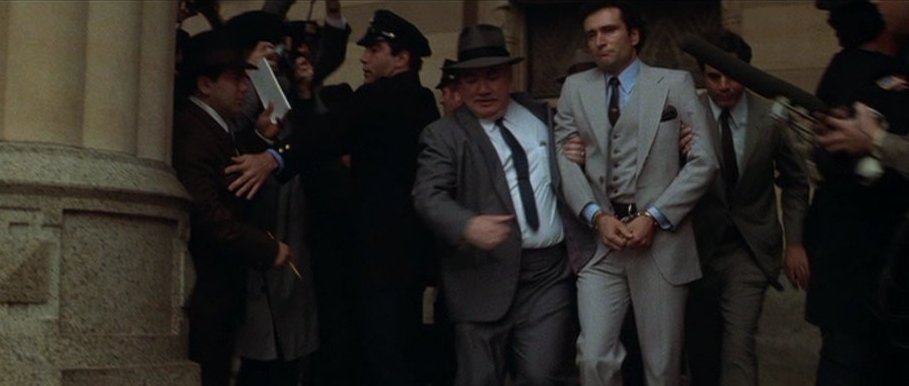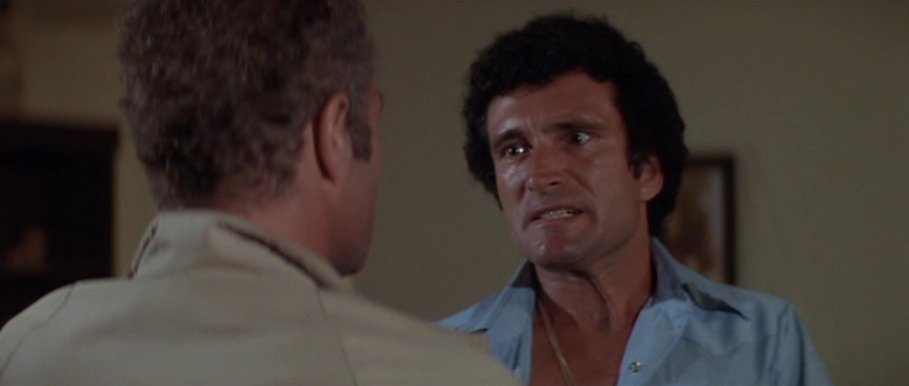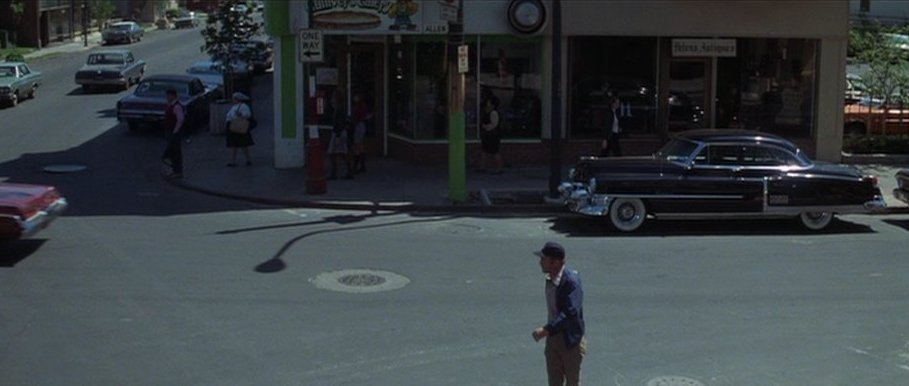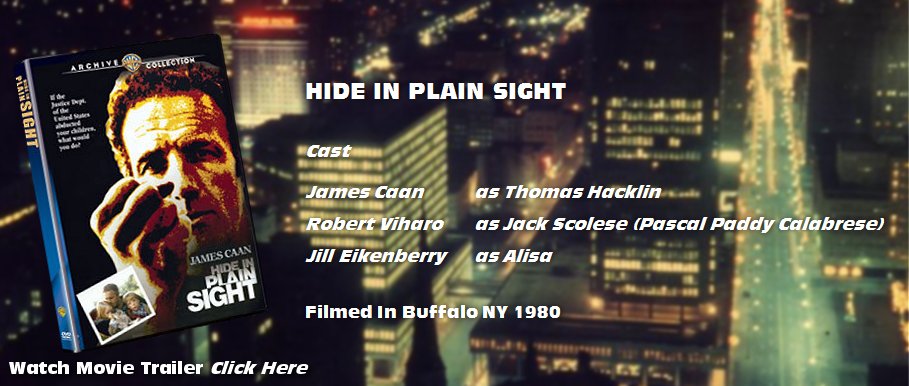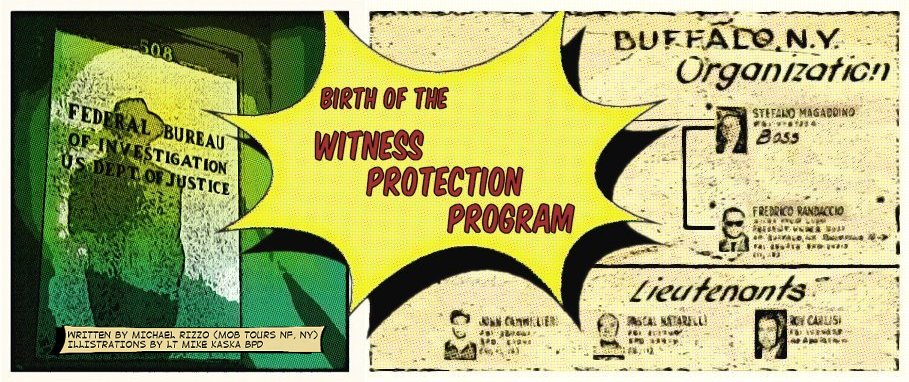
|
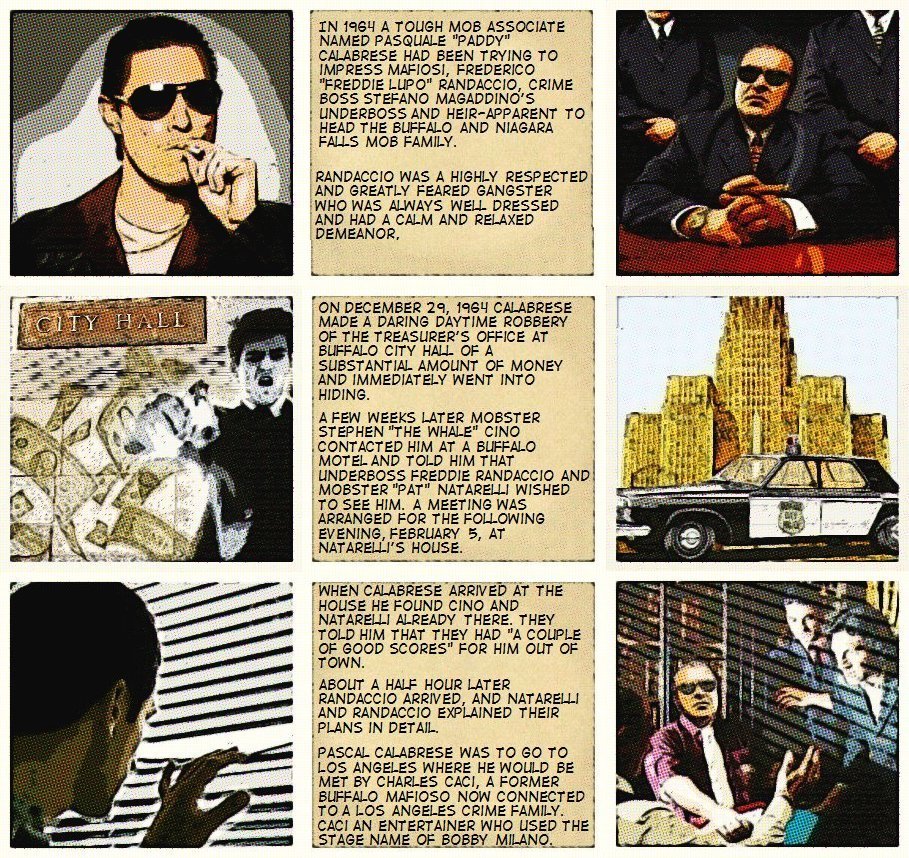
|
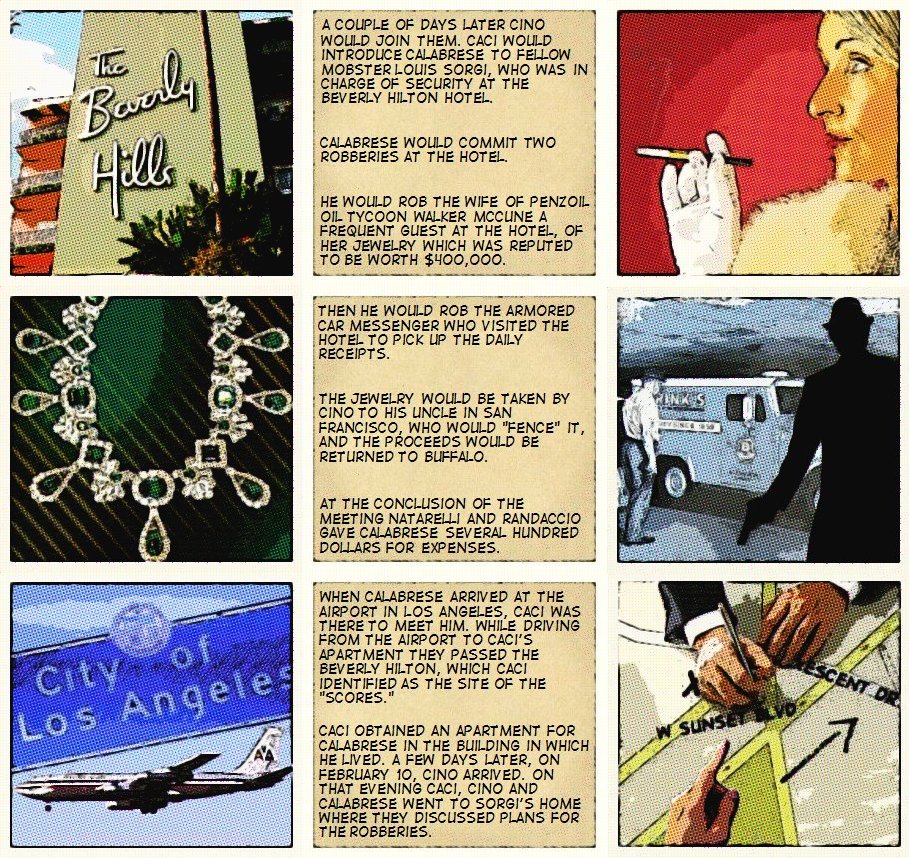
|
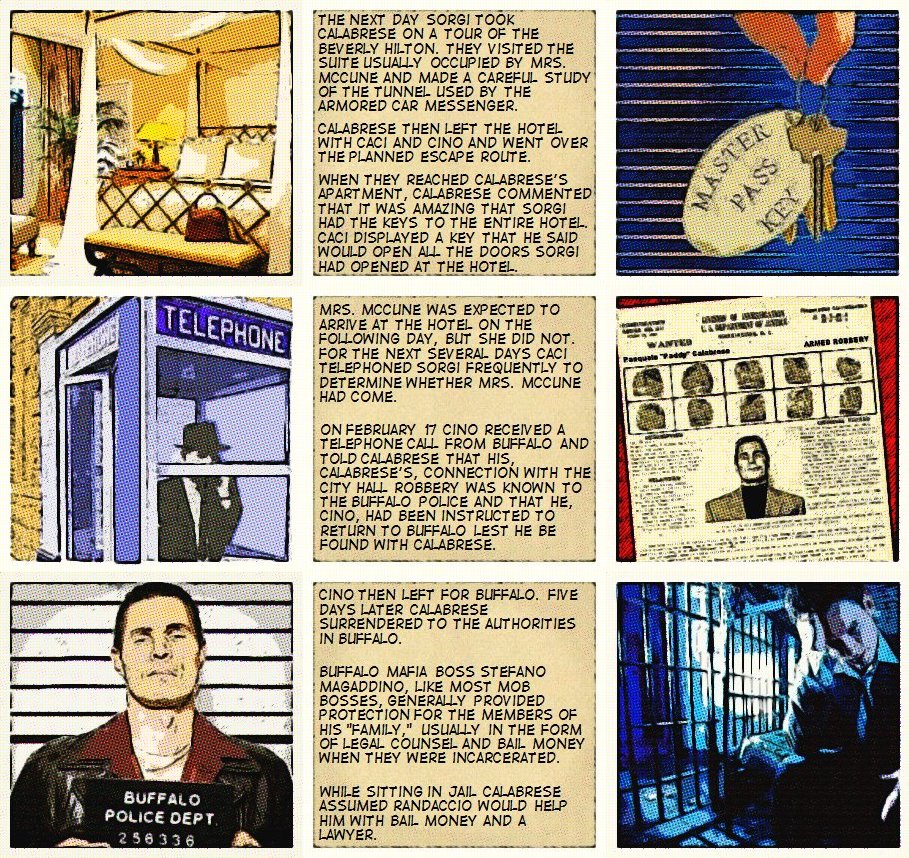
|
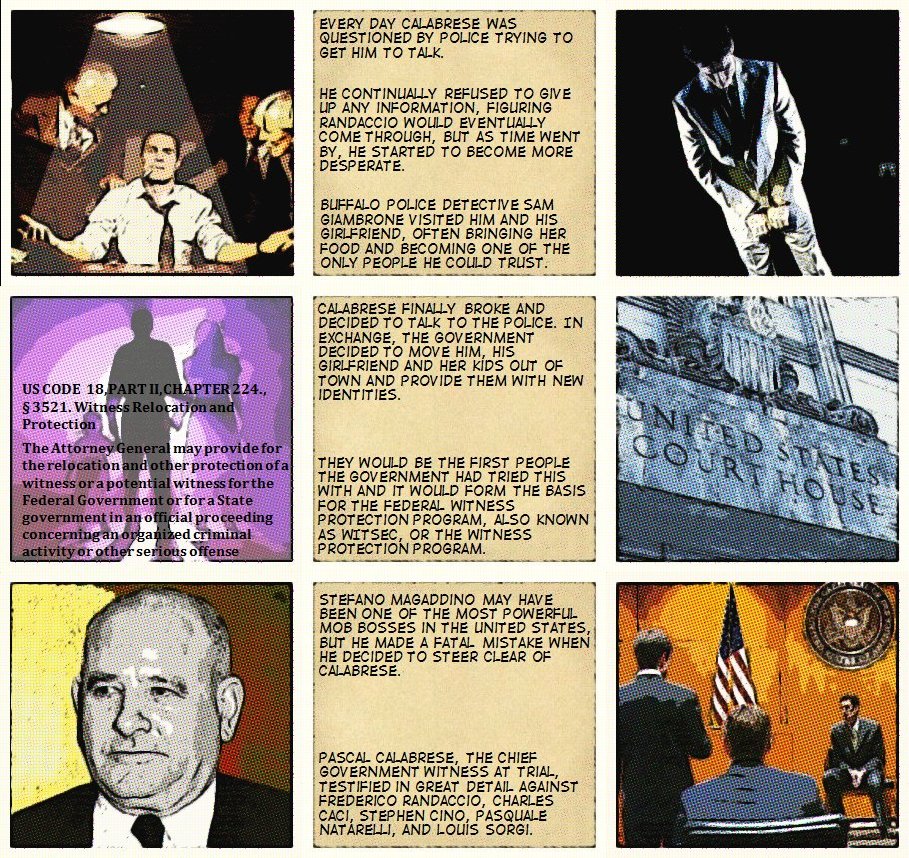
|
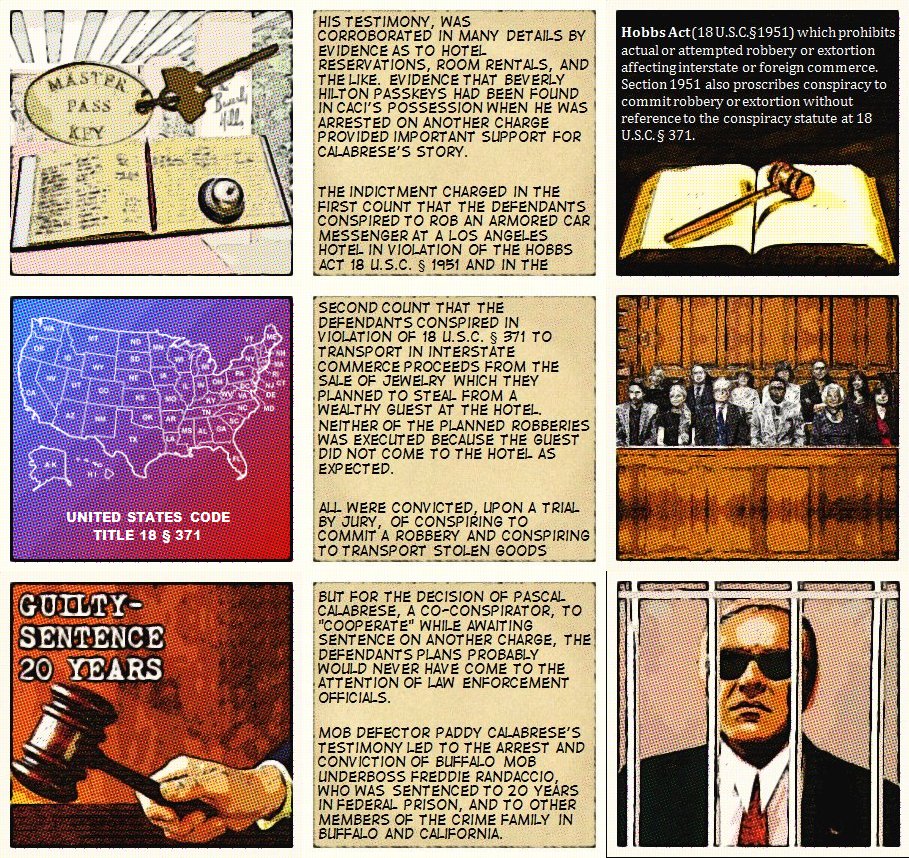
|
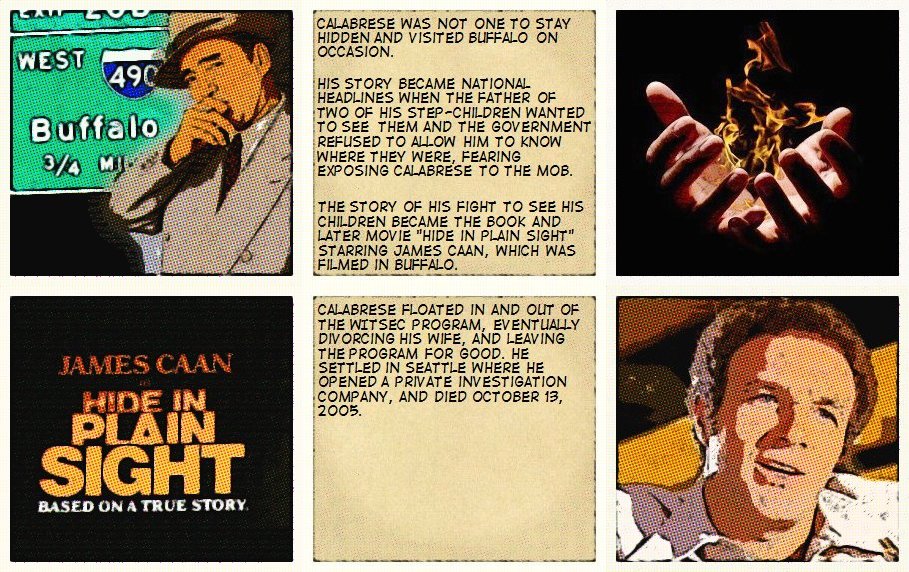
|
|
Scenes From James Caan Movie "Hide In Plain Sight" Filmed
in Buffalo NY 1980
|
|
|
|
|
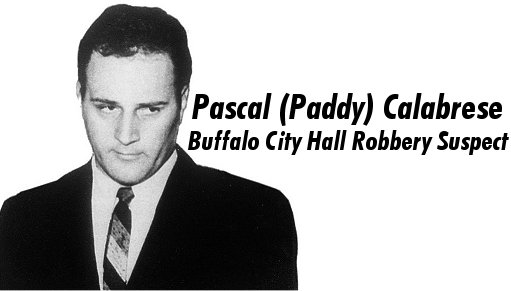
|
|
|
13
State Alarm Issued For Suspect In Buffalo City Hall Robbery
Buffalo,
NY February 19, 1965
(AP)
-A 13-state alarm has gone out for a 25-year-old man who
police say robbed the Buffalo City Treasurer's office of more
than $299,000 last December 29.
Buffalo
Police Commissioner William H. Schneider said yesterday a
warrant was issued charging Pascal Calabrese with first degree
robbery in connection with the theft.
Calabrese's
last known address was North Tonawanda NY.
"We
have a lead on the identity of Calabrese's accomplice in the
robbery," Schneider said, "but we are trying to gain
a positive identification before his identity is
disclosed."
Two
men robbed the city treasury in city hall of $299,130. of
which approximately $16,245. was in cash and the rest in
checks.
|
|
|
|
|
|
Buffalo City Hall Robbery Suspect
To Face Hearing
BUFFALO, NY February 23, 1965
Pascal (Paddy) Calabrese, 25, a suspect
in the $299,130 holdup of the city treasurer's office in
December, was released in $10,000 cash bail Monday to face a
hearing before City Judge William Heffron today.
Calabrese surrendered at Police Headquarters Monday
and denied any connection with the crime.
Police said Calabrese, of the Town
of Tonawanda, walked into
headquarters accompanied by his attorney, Joseph Mattina.
The dramatic development came
after Calabrese granted an
interview to a Buffalo broadcasting
station and appealed for
"a fair and impartial trial."
Warrant
Issued
Police issued
a warrant for Calabrese's arrest Thursday after Buffalo
Commissioner William H. Schneider announced witnesses had
identified him as one of two gunmen who escaped with
$16,245.80 in cash and the rest in non-negotiable checks from
the treasurer's office at Buffalo City Hall December 29.
Treasurer
Melvin W. Elliot was slugged by one bandit before the two fled
in a stolen car, later found abandoned one mile from City
Hall.
Police said
they had "nothing as yet" in the search for the
second bandit.
Reads
Statement
Calabrese
read a statement, authorized by his lawyer, at the radio and
TV station shortly before giving himself up. "Contrary to
published reports, I had not been out of state or fled' the
state to avoid prosecution, at the time the warrant was
issued," he said. "When I received news of the
arrest warrant on Friday I immediately contacted my attorney,
Joseph Mattina, who was in New York City on business. "I
informed him that I wished to surrender in order to properly
clear my name.
He advised me
that he would make the necessary arrangements for my surrender
on his return to Buffalo, which would be February 22.
Expresses
Wish
"I hope
that the citizens or the community, irrespective of the false
charges against me and the publicity following these charges,
grant me my one and only request a fair and impartial
trial,"
Calabrese
added. "I am not guilty of the charges brought against me
and know that if a fair and impartial trial is granted me, I
will be lawfully cleared of the charges."
|
|
|
|
|
|
Hearing Set For Suspect In
Robbery
BUFFALO, NY February 24, 1965
(UPI) Pascal Calabrese, 25, briefly freed and
rearrested Tuesday in the $299,130 holdup of the city
treasurer's office, was scheduled to have a preliminary
hearing today.
The hearing was originally set for Tuesday but
a legal technicality caused the delay.
Judge Ann T. Mikoll dismissed' the first
degree robbery charge against Calabrese because of an improper
affidavit.
The ex-marine from the Town of Tonawanda who
surrendered to police Monday, was quickly re-arrested minutes
later after a witness to the December 29 robbery signed
another statement.
Calabrese was free in $10,000 bond.
|
|
|
|
|
|
Calabrese Trial Is Being Heard
BUFFALO, NY May 22, 1966
Testimony in the trial of Pascal Calabrese, 26,
charged with staging a bold $300,000 holdup in the city hall
office of the city treasurer in 1964 was to continue in State
Supreme Court Monday.
Calabrese, of North Tonawanda, is charged with
entering the office Dec. 30, 1964 with two companions and
scooping $16,245 in cash plus $282,884 in non – negotiable
checks from a teller's cage.
Then City Treasurer Melvin W. Elliott was hit over the
head with the butt end of a pistol by the unmasked thieves
during the heist.
None of the loot has been recovered" and
Calabrese's two alleged partners remain at large.
|
|
|
|
|
|
Calabrese Is Guilty In Holdup
BUFFALO,
NY May
26, 1966
(UPI)-Pascal
Calabrese, 27, convicted Wednesday
on three counts
of first-degree robbery in
a $300,000 City Hall
holdup 18 months ago,
remained in County Jail
today pending sentencing.
Calabrese, of
North Tonawanda, was
convicted after about
five hours deliberation in
State Supreme Court by an 11-man,
one-woman jury just before
midnight.
Three men
entered the office of
the city treasurer in City
Hall on Dec. 30, 1964, and
scooped- $16,245
in cash and
$282,884 in non-negotiable checks
from a teller's window.
One of the
trio, identified in
court as Calabrese, slugged former City Treasurer Melvin
T. Elliott over the head
with the butt end of a pistol
during the robbery.
None of the
cash and checks has
been recovered and police are
still seeking two other men
in connection with the heist.
Supreme Court
Justice Joseph A.
Nevins set sentencing for
June 17.
Jailed for
Contempt
Meanwhile, a
reluctant witness in the case, Frank Meranto of Buffalo, is
serving a 30-day jail term for contempt of court.
Meranto, the
lead-off witness in the trial, refused to offer testimony,
even after having been granted immunity from prosecution, on
the grounds that he might incriminate himself.
He has
appealed the contempt action to the Appellate Division.
|
|
|
|
|
|
Calabrese's Sentencing Is Delayed
BUFFALO, NY July 7, 1966
(UPI) – Pascal Calabrese, 27. remained in Erie
County Jail today again awaiting sentence for a 1964 City Hall
robbery which netted thieves almost $300.000.
Calabrese of North
Tonawanda, was convicted May 25 by a State Supreme Court jury
on a first-degree robbery charge in the heist.
He had been scheduled to be sentenced June 17 but the
date was pushed back to Wednesday.
After a request by the district attorney's office
Supreme Court Judge Joseph Nevins again delayed sentencing
and announced the defendant would now be sentenced September 6.
Three bandits entered the city treasurer's City Hall
office on the morning of Dec. 29. 1964. and scooped cash and
checks totaling $299,129 from a teller's cage.
None of the loot has been recovered and police say two
other men are still sought in the case.
|
|
|
|
|
|
Calabrese Sentenced To 5 Years
BUFFALO, NY September 7, 1966
(UPI)—Pascal Calabrese, of North Tonawanda was
sentenced Tuesday to up to five years in state prison for his
part in a 1964 City Hall holdup which netted just under
$300,000.
Calabrese, convicted of first degree robbery on May 25
by a State Supreme Court jury, was ordered to serve the term
at Elmira Reformatory by Justice Joseph A. Nevins.
The sentencing followed pleas for leniency by Asst
Dist Atty. Sheldon M. Markell and defense counsel William J.
Cunningham.
Four witnesses- in the trial identified Calabrese as
one of the two bandits who entered the city treasurer's office
on December 29, 1964, and made off with more than $16,000 in
cash and $283,000 in-checks.
None of the loot has been recovered.
|
|
|
|
|
|
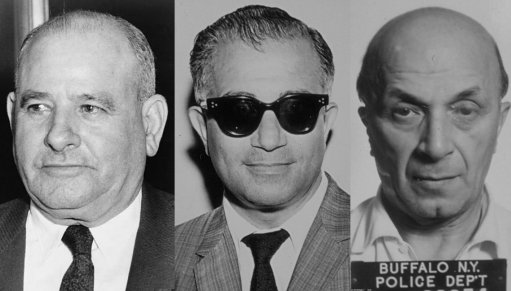
|
|
|
Magaddino |
Randaccio |
Natarelli |
|
|
Federal Arrest Nets
Aides to Magaddino
BUFFALO, NY June
21, 1967
(AP) -
Federal agents early today arrested six
men, three described as
linked with Cosa Nostra, on charges
of conspiracy involving planned
robbery of three banks, an
armored truck and a hotel.
None of the
robberies was committed,
U.S. Atty. John T, Curtin
said.
In 1963,
Buffalo police described three
of the men as connected with
the underworld crime organization.
One of the
trio served a
federal prison sentence.
Curtin said
the men, all arrested at
their homes, were:
Frederick Randaccio,
59. Pasquale Natarelli, 56, Nicholas Rizzo, 48, Stephen A.
Cino, 30, and Salvatore J. Pieri, 56, all of Buffalo, and
Daniel J. Domino, 64, of nearby Kenmore.
He identified
the banks as being in Buffalo and West Virginia and the
armored truck and hotel in California.
Curtin said
Randaccio, Natarelli and Rizzo conspired in July 1963 to rob
the Peoples Bank of
Weirton West
Virginia and the Weirton Savings & Loan Co.
They also
were charged with violation of' the Hobbs Act, a federal law
making it a crime to interfere with commerce.
In Februarv
1965. Curtin said, Randaccio', Natarelli and Cino planned to
rob a truck of the Armored Transport of Los Angeles Inc. and
the Beverly Hills Hilton Hotel. The Hobb Act
violation
also was filed against them.
Pieri and
Domino were charged with conspiring to rob the
Fillmore-Glenwood branch of the Marine Trust Co. in Buffalo in
October 1963.
Conviction on
the Hobbs Act charge could draw a maximum prison sentence of
20 years. The
maximum for
conviction on the conspiracy charge is five years
imprisonment.
In a 1963
report to a Senate crime committee, Buffalo Police claimed
Randaccio was a chief lieutenant to Stefano Magaddino of
Lewiston, the reputed Cosa Nostra boss in Western New York and
a part of Ontario.
Police said
that while Pieri was serving an 8-year, 4-month sentence in
the federal prison at Atlanta for narcotics violation he was
replaced as Magaddino's top aid by Randaccio.
Pieri's
brother John, also known as John Rai, was sentenced to a life
term in Ohio more than 25 years ago for murder.
Natarelli was
described as a lieutenant under Magaddino.
Rizzo
recently was cleared of a second-degree assault charge for
allegedly kicking a detective during a raid on a dinner that
police described as a little Apalachin meeting. He and
Randaccio and 34 others also were freed of charges of
consorting with known criminals.
|
|
|
|
|
|
“City
Hall Bandit” Moved
From Prison to
Seclusion
BUFFALO, NY July 6,
1967
Pascal F.
Calabrese, a former North Tonawanda resident, sentenced to
Elmira Reformatory last Sept. 6 for the 1964 robbery of the
Buffalo City Hall treasurer's office, Is no longer In prison
but in seclusion under heavy police guard waiting to testify
in a pending trial.
A tight cloak
of secrecy was wrapped around the case today by police
officials in the wake of disclosure of Calabrese's status.
Calabrese,
27, who formerly resided at 28 N. Jesella Drive, was
transferred about three weeks ago from Elmira Reformatory to
Wallkill State Prison.
On June 6, be
left the prison in the custody of two Buffalo policemen.
Authorities declined to reveal his present whereabouts aside
from Indicating that he was in custody under guard.
Erie County
District Attorney Michael P. Dillon, who obtained a federal
court order transferring Calabrese, declined to comment.
"It's an
ultra - sensitive situation and it shouldn't be publically
discussed at this time because there are other matters to be
considered." Mr. Dillon told The NEWS.
U. S.
Attorney John T. Curtin said Calabrese was In custody and not
in Buffalo. Had declined further comment.
Authorities
also declined to reveal where Calabrese's wife and four
children were located.
Calabrese was
convicted of first-degree robbery In connection with the
$299,000 holdup of the city treasurer's office. He could have
been sentenced to 10 to 30 years.
Supreme Court
Justice Joseph A. Nevina sentenced him to the lighter term
after Assistant District Attorney Sheldon M. Market said
Calabrese supplied Information in the case that would not have
been obtainable otherwise.
Calabrese has
described himself as a gambler who made his money betting on
horses and shooting pool.
Last week he
was named coconspirator but not a co-defendant in Federal
Court with eight men accused in a nationwide series of planned
holdup plots of various banks and businesses in Buffalo,
Weirton, West Virginia and Los Angeles.
None of the
holdups ever materialized.
The eight
pleaded innocent to conspiracy charges and are free in bail
pending trial. Federal Court Judge John O. Henderson said he
will hear motions In the case on July 24 in Buffalo.
Two of the
suspects have been linked with Cosa Nostra crime syndicate
activities in the Western New York area.
Named as
defendants were Frederico G. Randaccio, 59, Salvatore J. Pieri,
86, Pasquale Natarelli, 58, Stephen A. Cino, 30, Nichols
Rizzo, 48. all of Buffalo; Daniel J. Domino, 39, of
University
Ave., Town of Tonawanda, and Louis F. Sorgi, 48, of Sherman
Oaks, Calif.
Randaccio and
Natarelli have been linked with Cosa Nostra activities during
U. S. Senate hearings.
|
|
|
|
|
|
Jury Finds All 5 Defendants
Guilty in Crime Plotting Case
BUFFALO, NY November 22, 1967
Five men, one of them identified as a high ranking
Mafia enforcer, were convicted in Buffalo Federal Court late
yesterday on charges of plotting two major robberies, one a
$500,000 jewel theft in Beverly Hills California.
One of the defendants, Fredrico Randaccio, was listed
in U.S. Senate testimony in 1963 as the "heir
apparent" to Stefano Magaddino, head of the Western New
York "family" of LaCosa Nostra.
Randaccio and the four others were found guilty of
conspiring in February of 1965 to commit two robberies at the
Beverly Hilton Hotel. Neither of the heists materialized.
The nine-man, three – woman jury returned verdicts
of guilty on both counts against the 60 year-old Randaccio and
the other defendants: Pasquale Natarelli, 56, Steven Cino, 30,
and Charles Caci, 30, all of Buffalo, and Louis Sorgi, 46,
formerly of Buffalo and now of Sherman Oaks, Calif.
Natarelli was described in the Senate testimony as a
first lieutenant to Randaccio. Cino has also been linked by
authorities to the underworld.
All five face maximum sentences of up to 25 years in
prison and up to $30,000 in fines.
The verdicts were returned 12 hours after Federal
Judge John O. Henderson wound up the three-week trial and
presented the case to the jurors. No sentencing date was set
and the defendants were taken into custody pending a bail
hearing.
The government's case was based on the testimony of a
state prison inmate currently doing time for a bold $299,000
robbery at Buffalo City Hall in 1964. Pascal Calabrese,
formerly of North Tonawanda, testified he
learned of the plans in conversations with the five defendants
both here and on the West Coast.
According to the prosecution, the five conspired to
rob an armored car messenger and to
steal about $500,000 worth of jewelry from Mrs. Walker
McCune of Rancho Santa Fe, Calif,
and Phoenix, Ariz., who often stayed in the hotel's
penthouse suite.
Assistant U.S. Attorney Andrew F. Phelan, the
prosecutor, identified Randaccio as "the mastermind, the
brains" in the conspiracies. Natarelli, he said, was
Randaccio's "right-hand man." Sorgi the chief
security officer at the hotel was "the man on the
inside" who made friends with Mrs. McCune and helped plan
the heists, Phelan said.
Calabrese said he was told the armored car theft
"would be good for about $100,000."
|
|
|
|
|
|
Five
Found Guilty of Plotting Two Robberies at Beverly Hills Hotel
BUFFALO, NY November 22, 1967
(AP) -
Five men, two
described as Cosa Nostra figures in U.S. Senate records, have
been found guilty by a U.S. District Court jury of conspiring
in Feb. 1965 to commit two robberies at a Beverly Hills, Calif,
hotel. Neither robbery took place.
The five men
found guilty were charged by the federal government with
conspiring to carry out the robbery of an armored car
messenger and a jewel robbery at the Beverly Hilton Hotel.
They are
Frederico G. Randaccio, 60, Pasquale Natarelli, 56, Stephen
Cino, 30, Charles Caei, 30, all of Buffalo, and Louis Sorgi,
46, formerly of Buffalo and now living in Sherman Oaks, Calif.
The jury,
after five hours deliberation Tuesday hi the two and a, half
week trial, delivered the guilty verdict to the five on both
counts—conspiring to obstruct, by robbery, the movement of
money in interstate commerce, and conspiring to transport
stolen money or goods in interstate commerce.
The first
charge carries a prison term of up to 20 years and a fine up
to $10,000. The second charge holds an up-to-five year prison
term and an up to $10,000 fine.
Judge John O.
Henderson of U.S. District Court ordered the ball of the five
men revoked immediately on the grounds that a trial witness
and his family had been threatened and had been taken into the
government's protective custody.
The five
faced a hearing today concerning bail revocation after they
were kept overnight in Erie County Jail.
Randaccio and
Natarelli have been described as being Cosa Nostra figures in
U.S. Senate records. These two as well as Cino were among 36
men were among 36 men arrested in an FBI and police raid on
Panaro's Lounge here last May 8 on charges of consorting with
known criminals.
The next day
the charges were dismissed in City Court.
(Randaccio
was referred to In' 1963 Senate crime bearings as the
"enforcer" and "heir apparent" to Stefano
Magaddino of Lewiston, reputed Mafia lord of Canadian and
Buffalo Cosa Nostra interests. Buffalo and federal law
enforcement officials also connected Natarelli with Cosa
Nostra activities arid the U.S. attorney's office has, placed
Stephen Cino with Mafia contacts on several occasions.)
The
government's main; source of testimony was Pascal F.
Calabrese, 28, formerly of nearby North Tonawanda. He is now
serving a jail term for a robbery at Buffalo City Hall
treasury office m 1964.
Randaccio,
Calabrese testified, was the mastermind of the robbery plot
while Natarelli was his right hand man.
Calabrese
said he had been
introduced to Sorgi by Caci when he had gone to the West
Coast. Cino was described as the messenger between Buffalo and
California.
|
|
|
|
|
|
Terms
Total 80 Years
5
Men Sentenced
In
Conspiracy Case
BUFFALO NY December 12, 1967
Five men,
including the reputed heir apparent to one of the country's 24
Mafia families, began serving prison terms totaling 80 years
today for plotting two major west coast robberies.
The
sentencing of the five by
U.S. District
Court Judge John O. Henderson in Buffalo yesterday marked the
final step in the biggest single blow to organized crime in
Western New York in several years.
The power of
the Punch came from an experimental "strike force"
program developed by the U.S. Department of Justice.
Fredrico
Randaccio, 60, Pasquale Natarelli, 56, and Stephen
A. Cino, 30,
all of Buffalo, were
sentenced to
20 years in prison
on the first
of two conspiracy
counts. They
were handed concurrent
five-year
terms on the
second count.
Randaccio was
described as
the number
two man to alleged
Cosa Nostra
boss Stefano Magaddrno
of Niagara
Falls during
testimony
before the U.S. Senate
four years
ago.
Natarelli
and Cino have
also been linked
to the
underworld.
Charles Caci,
30, of Buffalo,
and Louis F.
Sorgi, 46, of Sherman
Oaks, Calif.,
were both
handed
10-year sentences on the
first count
and concurrent five year term on the second.
Attorneys for
the men were expected to appeal the case.
All five were
convicted Nov. 21 of conspiring to steal $500,000
in jewels
from Mrs. Walker McCune, a wealthy California
woman. They
were also found
guilty of
plotting to rob an armored
car messenger
of up to
$200,000.
Both heists were
planned for
the Beverly Hilton
Hotel in
Beverly Hills, Calif.,
but neither
ever materialized
The
convictions were the first in the nation under the strike
force which was organized here in secret earlier this year.
A total of 14
indictments involving
31 defendants
have been returned
to date.
Bail for the
five men was revoked
immediately
after the
jury returned
its verdicts on
the basis of
signed affidavits
presented to
Henderson. The affidavits,
never made
public, alleged threats against the lives
of
prosecution witnesses, authorities said. Henderson reaffirmed
the bail revocation yesterday
after defense
lawyers asked that their clients be freed pending appeal.
The
government's case was based on the testimony of Pascal
Calabrese, formerly of North Tonawanda, a state prison inmate
serving time for a $299,000 robbery at Buffalo City Hall.
Calabrese was
indicted as a co-conspirator m the case, but not a
co-defendant.
The strike
force headed by attorneys from the organized
crime section
of the justice department's criminal division pools the
manpower, knowledge and resources of several agencies ranging
from the labor department to city police and from the U.S.
Secret Service to the Royal Canadian Royal Mounted Police.
Randaccio and
Natarelli are also under indictment for plotting to rob a bank
and a savings and loan association in Weirton, W.Va. No trial
date has been set.
|
|
|
|
|
|
Kenmore Man Seeks To Locate
Children
BUFFALO, NY July 30, 1971
Theodore Leonhard, 31, of 411 Hazeltine Ave.,
Kenmore, yesterday filed suit in Federal Court in Buffalo to
compel the U.S. Department of Justice and others to let him
know where his three children are being kept.
The children reportedly are with their
stepfather, Pascal Calabrese, 31, and his wife, Rochelle, Mr.
Leonhard's former wife. But federal agencies have been keeping
the whereabouts of Calabrese secret since he became an
informer in an organized crime case.
Meanwhile, a state court order gave Mr.
Leonhard custody of the children: Michael, 11; Karen, 10, and
Stephan, 8.
Mr. Leonhard sued for total custody when he
failed to get the visiting rights that a court had granted him
previously.
Now he's also suing the FBI, the organized
Crime Strike Force and Thomas A. Kennelly, now a deputy chief
in the strike force, as well as the Department of Justice in
his attempt to locate and regain his children.
In December 1966, Mr. Leonhard was divorced by
his wife and she was given custody of the three children. She
married Calabrese in August 1967.
Widely thought to be target of gunmen as a
"Fed" informer, Calabrese and his wife have been
living in a secret place under federal protection.
That was given after his testimony resulted in
conviction of five men, including Frederico Randaccio, second
high man in the area organized crime totem pole.
Calabrese himself was arrested and convicted
for a $299,000 Buffalo city treasurers office holdup in 1964.
|
|
|
|
|
|
Calabrese Whereabouts
Remains Guarded Secret
BUFFALO NY May 25, 1972
U.S. District Court Judge John 0. Henderson
ruled yesterday in Buffalo that the federal government does
not have to disclose the whereabouts of a government informer
who was relocated after testifying at a 1967 trial of a
reputed Mafia figure.
Henderson ruled on a suit brought by Thomas
Leonhard, 32, of 282 Miland Ave., Town of Tonawanda, who
sought the whereabouts of Pascal Calabrese, who testified as a
government witness at the 1967 trial of reputed Mafia
underboss Fredrico Randaccio and four others.
Calabrese formerly resided in North Tonawanda.
Leonhard and his wife were divorced in 1966
and she was granted custody of their three children. She
married Calabrese in August, 1967.
Calabrese, who admitted being a member of an
organized crime syndicate, was relocated with his family to
protect him from any possible reprisals for his role as a
government witness.
In June, 1971, a State Supreme Court justice
granted a full custody of the children to Leonhard.
Leonhard argued that despite the order he had
not seen his children for four years and was deprived of his
court ordered visitation rights under the previous setup.
Calabrese was convicted in 1966 of
first-degree robbery in the theft of $299,130 from the Buffalo
City Treasurer's office in 1964 and could have been sentenced
to 10 to 20 years in prison. However, he was sentenced to an
indeterminate term in Elmira Reformatory.
Hendenson said that Thomas Kennelly. deputy
chief of the organized crime and racketeering section of the
U.S. Justice Department at the time of the trial, had stated
he would not disclose Calabrese's whereabouts.
Henderson said that Kennelly was the only
person who knows where Calabrese was living and that he
believed to disclose the location would jeopardize the
children's safety.
Henderson ruled that there was no indication
that the government's refusal to disclose the whereabouts of
the children was motivated by anything but an attempt to keep
its promise to Calabrese.
Randaccio and four others were convicted of
planning to rob jewels from a wealthy guest at the Beverly
Hilton Hotel in Los Angeles and to rob an armored car
messenger at the hotel.
Randaccio was sentenced to a 20- year prison
term as result of the conviction. The four others also were
given lengthy prison sentences.
|
|
|
|
|
|
Prison Term
Goes Unserved For Five Years
BUFFALO NY October 24, 1973
Joseph Erhart, 45, of Buffalo has had a prison
sentence hanging over his head for the past five years.
He was charged with conspiring to rob the
Fillmore-Glenwood Branch of the Marine Midland Bank Western
1423 Fillmore Ave . Buffalo on Oct 21.
1964. and sentenced in 1968
The government's principal .witness in the
case was Pascal 'Paddy' Calabrese, 33. who resided at 28 N
Jesella Drive. North Tonawanda several years ago.
Calabrese. who is now in hiding under another
name with government protection, first came to public notice
when he staged a daring daylight holdup of the Buffalo City
Treasurer's office in 1964,
Also a key witness in the conviction, of
alleged Mafia leader Frederico Randaccio for his role in
California robberies.
Calabrese also was involved in a case in
Buffalo Federal Court.
He married a woman with several children and
the woman's ex husband is seeking custody of the children, but
the government won't reveal Calabrese's whereabouts
Erhart appeared in Buffalo Federal Court
yesterday before U.S. District Court Judge John O. Henderson,
the same judge who sentenced him in 1968 to three years in
prison and a $10,000 fine.
What both Erhart and Henderson didn't figure
on was the apparent administrative foul-up which followed.
Erhart was free on bond while he appealed his
conviction, working at a car rental agency In 1969.
The U.S. Supreme Court refused to hear his
appeal but an order to pick up Erhart apparently never arrived
in Buffalo.
He remained a free man until last week when
the FBI asked him to pay the $10,000 fine. "They asked me
if I was ever in jail." Erhart said "and I said
no."
"For the first two years, every time my
phone rang I shuddered." Erhart added. "This has
been over my head for five years."
Henderson said he could not rule on the matter
until the missing orders arrived regarding Erhart.
Erliart's attorney, meanwhile, has asked
Henderson to reconsider the original, sentence, citing his
client's '"exemplary" conduct over the past five
years.
U.S. Attorney John T. Elfvin termed Erhart's
freedom the result of a "great big goof-up."
"This guy is very fortunate," Elfvin said,
"very lucky."
|
|
|
|
|
|
Calabrese Says He's Not
Worried
Randaccio Released From Federal Prison,
Served 11 Years Of 20 Sentence
BUFFALO, NY July 3, 1979
(UPI) - A former North Tonawanda resident
whose testimony sent a reputed organized crime underboss to
prison in 1968 says he does not fear reprisals after the
recent release of Frederico Randaccio from a federal prison,
published reports say.
"I'm not worried," Pasquale
Calabrese, a convicted robber turned government informer,
said Monday.
If he had taken care of what he was supposed
to take care of, he wouldn't be getting out of
anywhere right now." Randaccio, 72, was
released Pa., federal prison camp after serving more than 11
years of a 20-year sentence for conspiring to commit two West
Coast
robberies.
Randaccio was identified by Joe Valachi during
a U.S. Senate subcommittee hearing in the
early 1960s as a lieutenant in the western New
York organized crime family of the late Stefano Magaddino.
Calabrese, now living in another part of the
country, has maintained he agreed to testify
against Randaccio when he and other members of
the underworld refused to furnish promised bail money and
legal fees after his arrest for a 1964 Buffalo City Hall
robbery.
In return for his testimony, the federal
government moved Calabrese and his family to another city and
gave them new identities, making them among the first members
of the federal Witness Protection Program.
"He's got to think twice about trying
something," said Calabrese. "I'm the government's
No. 1 witness, and I'm sure they would make some move toward
Freddie himself if something happens to me."
The turmoil caused by Calabrese's entry into
the witness program and subsequent moves of himself, his wife
and step children was the partial basis of a book and movie,
"Hide In Plain Sight."
The yet-to-be released movie, filmed last
summer in Buffalo, details the eight-year search by Thomas
Leonhard for his children, who were living with thier mother,
Mrs. Calabrese.
|
|
|
|
|
|
A
Father's Long, Bitter Search for His Children Ends at the
Doorstep of the U.S. Government
By
George Borrelli
BUFFALO,
NY January
08, 1979
Later
this month in federal district court in Buffalo, N.Y. an
astonishing 11-year-old imbroglio will finally come to trial:
the case of Tom Leonhard, a 39-year-old cement mason who has
sued the U.S. government for $10.5 million in damages for
depriving him of the right to "raise, rear and nurture
his children."
Leonhard's
bizarre, Kafkaesque tale is already a book, titled Hide in
Plain Sight, and actor James Caan is directing and starring in
the movie of the same name. But no dramatized account could
match Leonhard's chilling real-life battle with an unlikely
enemy—the U.S. law enforcement apparatus—in order to see
his son and daughter, who disappeared in a limousine in June
1967.
A year later Leonhard would learn that he was a victim of the
witness protection program, under which 2,700 government
witnesses, most of them in organized crime cases, have been
relocated and given new identities.
Leonhard's
first wife, Rochelle, divorced him in 1966 to marry one such
Mafia informant, Pascal "Paddy" Calabrese, a
small-time heist man in Buffalo. With him and her three
children (one of whom apparently was Calabrese's), she fled
underground eventually to a new life in Reno, Nev.
But
on that June afternoon 11 years ago, all Tom Leonhard knew was
that when he arrived for his Sunday visit with his son Mike,
7, and daughter Karen, 6, no one answered his knock at the
door. Rochelle's relatives said that she and the children had
"gone away for a while," but they didn't know where.
"I told myself I'd wait awhile," he recalls,
"that they couldn't just disappear without anyone knowing
their whereabouts.
Later
I went to the Buffalo police, and they insisted they didn't
know anything. The FBI told me to wait, be patient."
Finally the newspapers reported that Calabrese had been
relocated with his wife and children.
What followed, Leonhard says, was "one big
runaround." When he confronted Buffalo police, an officer
told him bluntly, "Leave well enough alone. Don't meddle.
This is a government thing."
Having
gone bankrupt because of large credit card debts left behind
by his former wife, he was unable to get a lawyer or
investigator to help him. "They all shied away from the
case," he says bitterly. "They said it would be a
long, expensive battle, and I didn't have the money to finance
it."
In 1968 Leonhard remarried, and he subsequently decided to
adopt his new wife's daughter by a previous marriage. The
lawyer who drew up the papers was a former public defender
named Salvatore Martoche, who had just gone into private
practice. When Leonhard told him what was happening with his
own children, "Sal just shook his head," he recalls.
"He didn't believe me." Finally Martoche agreed to
help.
Together they managed to pry loose the name of a man who knew
where Calabrese was—Thomas Kennelly, then head of the U.S.
Organized Crime Strike Force in Buffalo.
Refusing
to break his vow of secrecy, Kennelly did agree to forward
letters from Leonhard to his ex-wife. Rochelle ignored 12 of
them, and then, in February 1971, sent Martoche a reply to the
13th. "I am writing this letter in regards to your
client," she began. "It seems he is concerned about
his children's health and welfare. Please inform him that it
is excellent. Also inform [him] that in no way shall I ever
allow him to see them...I shall not read nor answer any more
letters."
Leonhard's progress in court was no better. A New York State
court awarded him custody of the two children, but repeated
attempts in federal court to force the government to produce
them failed. One court said it would take "the wisdom of
Solomon" to decide the case, and the U.S. Supreme Court
refused to review it.
Leonhard
at one point considered some dramatic gesture to call
attention to his plight—taking a hostage or hijacking a
plane, "but I knew I could never do anything like
that," he says. "I was confused, bewildered. I felt
my government had let me down. I was angry that the government
was taking care of Paddy Calabrese, a criminal, while I was
struggling to find my children. I was beginning to think it
was hopeless."
Then the case took a sudden dramatic turn.
Early
in 1975 Rochelle and Calabrese separated, and she apparently
had a change of heart. "I'll never forget that July
Fourth," says lawyer Martoche. "The telephone at my
home rang, and a voice on the other end said: 'Hi, Sal, this
is Ro. I made a terrible mistake. I just told the kids who
their real father is.'
Two
weeks later Tom Leonhard and his second wife, Joanne, were on
a plane to Reno for a tearful reunion with his children.
But it was not the happy ending Tom had envisioned. "When
I saw them," he remembers, "they had grown up. It
tore me up inside. I had lost all those years."
Perhaps
understandably, the children chose to remain with their mother
in Reno (although they have visited Tom on several occasions
since 1975), and he has not pressed his right to custody.
"We
have not been able to recapture what we lost," he says.
"The children were raised differently from the way I
would have raised them, with different values. The eight years
are gone and can never be replaced, and the government can
never make things even."
He
leaves the larger point to his lawyer. "The whole thrust
of this case is abuse of power by the government," says
Martoche. "We want to establish the precedent that
government agents can't interfere with the rights of parents
and children to be together. If it could happen to Tom
Leonhard, it could happen to anyone."
|
|
|
|
|
|
Calabrese
Dead
Pascal
Calabrese, "Hide in Plain Sight" Case Informant Who
Brought Down Buffalo Mafia Dies
Buffalo News Oct. 21, 2005
Pascal
Calabrese, June
15, 1939 -- Oct. 13, 2005 the
first Mafia informant to be given a new identity by the
federal government, died Oct. 13, 2005 in Kalispell, Mont.,
after suffering a massive heart attack. He was 66.
Mr. Calabrese, who was known as Paddy, had been a private
investigator for the last 25 years. He had moved to Seattle 18
years ago from Spokane, Wash., where he had operated Sherlock
Holmes Cafe & Precinct House. The business closed in 1981
after the revelation that the chief of the intelligence unit
of the Spokane Police Department had invested $50,000 as a
secret partner.
Mr.
Calabrese, formerly of Buffalo, first made headlines in the
1960s after being convicted of the armed robbery of the
treasurer's office in Buffalo City Hall. He testified against
major Mafia figures, including Buffalo Mafia boss Frederico
Randaccio, who was sentenced to 20 years for conspiracy.
After going
into hiding under an assumed name, Mr. Calabrese lived in
Reno, Nev., for five years, working as a security consultant
for gambling casinos.
Soon, he was
boldly consorting with criminals as an undercover agent for
the government. Sometimes he would slip back into Buffalo to
consult with police Detective Sgt. Samuel N. Giambrone, who
had persuaded him to testify against the mob.
As a
freelance undercover agent during the 1970s, Mr. Calabrese was
credited with playing a major role in cracking a vice and
gambling ring on the Alaska pipeline.
Then, working
with U.S. and Canadian authorities, he infiltrated a
counterfeit-money ring, leading to the arrest of six Mafia
figures and the seizure
of $1.2 million in bogus money in Vancouver, British Columbia;
Spokane; and Toronto. He was featured in
"Connection," a CBC documentary on the case.
When he left
Buffalo in 1967 under a new identity, he took with him his
wife, the former Rochelle Greco, and four children, including
two fathered by Rochelle's first husband, Thomas Leonhard.
Leonhard and his lawyer, now-State Supreme Court Justice
Salvatore R. Martoche, spent six years trying to get the
government to reveal the whereabouts of his children.
They finally
were reunited after the Calabreses divorced in 1975. Rochelle
Greco died in Reno in 2003.
Leslie Waller
told the story of Leonhard's search in the 1976 book
"Hide in Plain Sight," which was made into a movie
with the same title. Filmed in Buffalo in 1978, it featured
Robert Viharo as Calabrese and James Caan, who directed, as
Leonhard.
"Paddy
Calabrese touched off the demise of the Buffalo Mafia,"
said Lee Coppola, who wrote extensively about Mr. Calabrese as
a reporter with The Buffalo News and is now dean of the
Russell J. Jandoli School of Journalism & Mass
Communication at St. Bonaventure University.
"When he
broke the Mafia's code of silence, he started a snowball
effect that led to other informants, other convictions and
eventually to the death of the Buffalo Mafia," Coppola
said. "His life in hiding was the precursor to what we
know today as the Witness Security Program. Only, back then,
there was no program and no security, and Paddy relied on his
street smarts and wiliness to stay alive when others wanted
him dead. In the scheme of things, the Buffalo community owes
him a debt of gratitude."
Survivors
include two sons, Steve of Reno and Samuel of Puyallup, Wash.;
a daughter, Patricia Calabrese-Herald of Winlock, Wash.; a
stepson, Michael Leonhard of Sparks, Nev.; a stepdaughter,
Karen Leonhard of Reno; his father, Joseph of North Tonawanda;
a brother, Joseph Jr. of Las Vegas; two sisters, Barbara
Jakubowski of New York City and Julie Kraschinsky of
California; six grandchildren; and three stepgrandchildren.
|
|
|
|
|
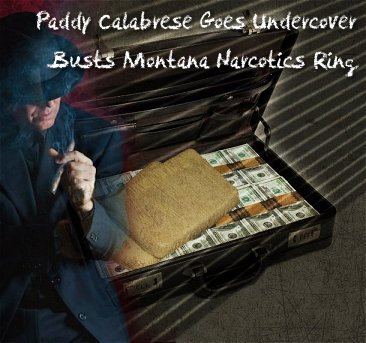 |
STATE
OF MONTANA, PLAINTIFF AND RESPONDENT, v. RALPH
STEVER, DEFENDANT
AND APPELLANT.
Supreme
Court of Montana Submitted January 22, 1987.
Decided
February 13, 1987.
Appeal
from the District Court of Lincoln County.
Nineteenth
Judicial District.
Hon.
R.D. McPhillips, Judge Presiding.
David
W. Harman, argued, Libby, for defendant and
appellant.
Mike
Greely, Atty. Gen., Helena, Clay R. Smith, Asst.
Atty.
Gen.,
Edward M. Dobson, argued, Legal Intern, Helena,
William A.
Douglas
argued, Lincoln Co. Atty. Libby, for plaintiff and
respondent.
MR.
JUSTICE HUNT delivered the Opinion of the Court.
This
is an appeal of a criminal conviction arising from
the
Nineteenth
Judicial District, in and for Lincoln County,
Montana.
Defendant
was convicted of the felonious sale of dangerous
drugs
and
now appeals. We affirm.
On
appeal, defendant raises two issues. The first is
whether
the
District Court erred by allowing Paddy Calabrese to
testify
about
statements made by John Loomis implicating defendant
as the
drug
supplier. The second issue is whether the District
Court
erred
in its circumstantial evidence jury instruction.
|
|
|
This
case began with an undercover narcotics
investigation
conducted
in Lincoln County, Montana, in 1983. County Attorney
William
Douglas hired Paddy Calabrese, a private
investigator
from
Spokane, Washington, to undertake this
investigation.
From
the inception of the operation, the prime targets of
this
investigation
were John and Debbie Loomis, a married couple
living
in or near Libby, Montana. Calabrese accordingly
contacted
the Loomises, pretending to be a real estate developer
from
Seattle.
This relationship soon blossomed to the point that
Calabrese
made a series of minor narcotics purchases from the
Loomises.
Calabrese
then entered into an agreement with John Loomis for
Loomis
to sell Calabrese two kilograms of cocaine for
$58,000 per
kilo.
During the course of these negotiations, Calabrese
came to
believe
that
the cocaine would be supplied by the defendant,
Ralph Stever.
The
sale of the first kilo was scheduled for August 5,
1983.
Prior
to this purchase, Lincoln County Sheriff's Deputies
gave
Calabrese
money for the purchase. The officers had recorded
the serial
numbers
of the bills, but had not marked them with any
tracing
element.
According
to his testimony at trial, Calabrese arrived at the
Loomis
residence with the purchase money at approximately
8:30 on
the
night of August 5. He showed Loomis the purchase
money in his
briefcase
and a brief discussion followed. Approximately
twenty
minutes
after Calabrese's arrival, Loomis left his residence
in a
vehicle,
for a place unknown to Calabrese, to pick up the
cocaine.
After approximately another twenty minutes, Loomis
returned
and informed Calabrese that the price had increased
to
$62,500
per kilo, and that half of that price was due in
advance.
Calabrese
gave Loomis $30,000 and Loomis again left.
Loomis
returned in approximately twenty-five minutes and
offered
Calabrese two bags containing cocaine. Calabrese
accepted
the
bags and paid Loomis the balance of $32,500.
Calabrese then
left
the Loomis residence and signaled the Sheriff's
deputies.
Again,
during the sale, Calabrese came to conclude that
Stever
supplied
the cocaine.
Upon
their arrest of Loomis, the Sheriff's deputies
discovered
that
he did not have in his possession all of the initial
$30,000
advance
money given him by Calabrese. When asked the
location of
the
missing money, Loomis named several possible
locations where
it
might be found. The first of these locations which
the
deputies
checked was the residence of one Tom Hileman.
Approximately
fifteen minutes after their arrival at the
Hileman
residence, the police discovered Stever hiding in
the
bushes
at the side of the house and promptly placed him
under
arrest.
Officer Neil Bauer later testified at trial that
when he
questioned
Stever subsequent to his arrest, Stever attempted to
strike
a bargain for his freedom in return for disclosing
the
location
of the missing purchase money. Stever denied making
these
comments.
Roughly
three hours after Stever's arrest, a deputy
searching
the
area found the missing money hidden beneath some
boards in
the
back yard of the Hileman residence. Police also
later found
in
a wood stove within the Hileman residence a paper
bag similar
to
the one into which Loomis had placed the missing
money.
At
trial, the State introduced other evidence in its
attempt to
establish
that Loomis received the cocaine from Stever. Jerry
Johnston
testified that he (Johnston) was living in the
Hileman
residence
at that time and returned to the house around 9:00
p.m.
on
August 5. When he arrived, Johnston saw John Loomis
on the
front
porch
of
the house talking with Stever.
Johnston
further testified that Loomis remained at the
Hileman
residence
for roughly ten to twenty minutes and then departed
for
fifteen
to twenty minutes. Johnston stated that Loomis
returned,
again
conversed with Stever — this time for five or ten
minutes —
and
then departed. While he was able to hear Loomis and
Stever
talking,
Johnston stated that he could not tell what they
were
talking
about.
The
State argued that Johnston's testimony fully
corroborated
the
time sequence of Calabrese's testimony. The round
trip
driving
time between the Loomis and Hileman residences
according
to
the testimony is approximately seven and one-half
minutes. At
trial,
Stever was found guilty of sale of dangerous drugs.
The
first issue we must decide is whether the District
Court
erred
by allowing Calabrese to testify about statements
made by
John
Loomis implicating Stever as the drug supplier.
In
its prosecution of the defendant the State relied
heavily
upon
the testimony of Calabrese, who related several
statements
made
to him by John Loomis which implicated the defendant
as the
cocaine
supplier.
Under
the terms of an earlier plea bargain
agreement,
the State had agreed not to call Loomis to testify
at
Stever's
trial. Because of that agreement, the State had to
introduce
Loomis's incriminating testimony through Calabrese,
over
the objection of the defendant that the use of such
testimony
violated both the hearsay rule and the Confrontation
Clause.
A.
The Challenged Testimony.
Calabrese
testified at trial that Loomis implicated the
defendant
in several statements throughout the course of their
dealings.
The first two statements were allegedly made on July
20,
1983, when Calabrese and Loomis were stopped south
of Libby
by
road construction and the defendant was in the car
immediately
in
front of them. Loomis first said to Calabrese:
"Stay
right here. I'm getting out of the car. That's our
elbow
man,
my toot [cocaine] man's right here in front of
us."
Loomis
then rode with defendant for a while as Calabrese
followed.
After Loomis returned to Calabrese's car, Calabrese
testified
that:
"Mr.
Loomis said to me that he just got confirmation from
Ralph
that
he could get as much cocaine as we wanted to
purchase and he
referred
to him — `he's like Jesus Christ.'"
The
remaining statements were allegedly uttered on
August 5,
1983,
the date of the sale:
"Mr.
Loomis stated to me that the price was $62,500.00
for a
kilo
and I asked him, I think we had a conversation the
next day
that
the kilo would be going down in price and he stated
to me he
would
need $30,000.00 up front and he would bring a kilo
back.
Because
that's the way Ralph wanted to do the deal.
"When
John Loomis gave me the kilo, he turned around and
said a
couple
of ounces were missing out of it and he would have
it
replaced
with the other kilo through Ralph tomorrow.
"Q.
How often was Ralph's name mentioned by Mr. Loomis
in these
conversations?
"A.
Probably the last day it was mentioned more than any
other
day.
I think three times the last day.
"Q.
And, was it made clear to you by Mr. Loomis as to
who was
the
supplier of this cocaine — who he was going to be?
"A.
Yes it was.
"Q.
And, who was that person?
"A.
Ralph Stever."
The
first issue is whether these statements were
properly
admitted.
B.
The Hearsay Rule.
A
review of the record reveals that the District
Court, without
explaining
its decision, admitted this testimony under the
coconspirator
exemption to the hearsay rule. This exemption, Rule
801(d)(2)(E),
states:
"A
statement is not hearsay if . . . [t]he statement is
offered
against
a party and is . . . a statement by a coconspirator
of a
party
during the course and in furtherance of the
conspiracy."
In
this case, the State presented Calabrese's testimony
relating
Loomis's two trips taken on the night of the sale to
pick
up the cocaine. This testimony, read in conjunction
with the
observations
of Jerry Johnston at the Hileman residence, provides
strong
circumstantial proof supporting the State's
argument.
Further,
the State presented the defendant's arrest while
hiding
in the bushes alongside the Hileman residence and
the later
discovery
of the drug transaction money in Hileman's back
yard.
While
these two events are not necessarily related, their
relationship
can be confirmed by the testimony of Officer Bauer
who
stated that the defendant offered to show Bauer the
location
of
the money in exchange for the defendant's release.
We
fail to find any error in this issue. Even were we
to accept
defendant's
statement of the law, his proposed instruction is
warranted
only where the case of the State rests substantially
or
entirely
upon circumstantial evidence. Here, the State had
introduced
Officer Bauer's direct evidence of defendant's
statement
connecting him with the money. Second, the State
introduced the direct evidence of Loomis's
statements, admissible, as we have shown,
under
Rule 801(d)(2)(E). Once admitted, they could be used
to
prove
the truth of the matter asserted. Defendant was not
entitled
to his proffered instruction, given the direct
evidence
in
this case.
Affirmed.
MR.
CHIEF JUSTICE TURNAGE and MR. JUSTICES HARRISON,
MORRISON,SHEEHY, GULBRANDSON and WEBER concur.
|
|
|
|
|
|
|
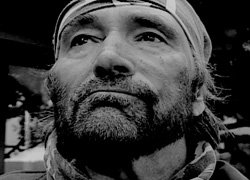
Robert Viharo |
E-Mail received from Actor/Film
Producer Robert
Viharo who played Jack Scolese in the movie
“Hide In Plain Sight” filmed in Buffalo NY 1980.
From: Piazza
del Popolo Productions
To: M Kaska
Sent: Sunday, August
08, 2010 1:56 PM
Subject: Re: Hide In
Plain Sight Buffalo Police Then and Now
Mike...great
job on the site...wow...impressive...the best thing about
the movie for me was meeting all the people in Buffalo...on
both 'sides'...especially Joey Giambra (Retired Buffalo
Police Detective) my life long good
friend...thanks for sending this Mike...Robert
|
|
|
|
Visit Author Mike
Rizzo's Mob Tours Web Page Click
Here
|

|
|
|
Buffalo
Mob, Buffalo Mafia, Buffalo Police, James Caan, Hide in plain sight,
Witness Protection Program, Buffalo NY City Hall, Buffalo City Hall
Robbery,
Magadinno,
Maggadino, Buffalo Crime Family, Niagara Falls Crime Family,
Pascal Calabrese Paddy, Thomas Leonhard, organized crime, informers
Pascal Calabrese, Thomas S Leonhard, Freddy Randaccio, Pascal
"Paddy" Calabrese, Stefano Magaddino,
Erie County Sheriff's Department, Erie County Holding Center, Beverly
Hills Hotel, Los Angeles Mafia, Los Angeles Mob, Beverly Hills Hotel
Robbery, Buffalo Police Then and Now, Mob History, Mafia History,
Buffalo Mobsters. "Birth of the Witness Protection Program",
Birth of the Witness Protection Program,
|
|

![]()







![]()
